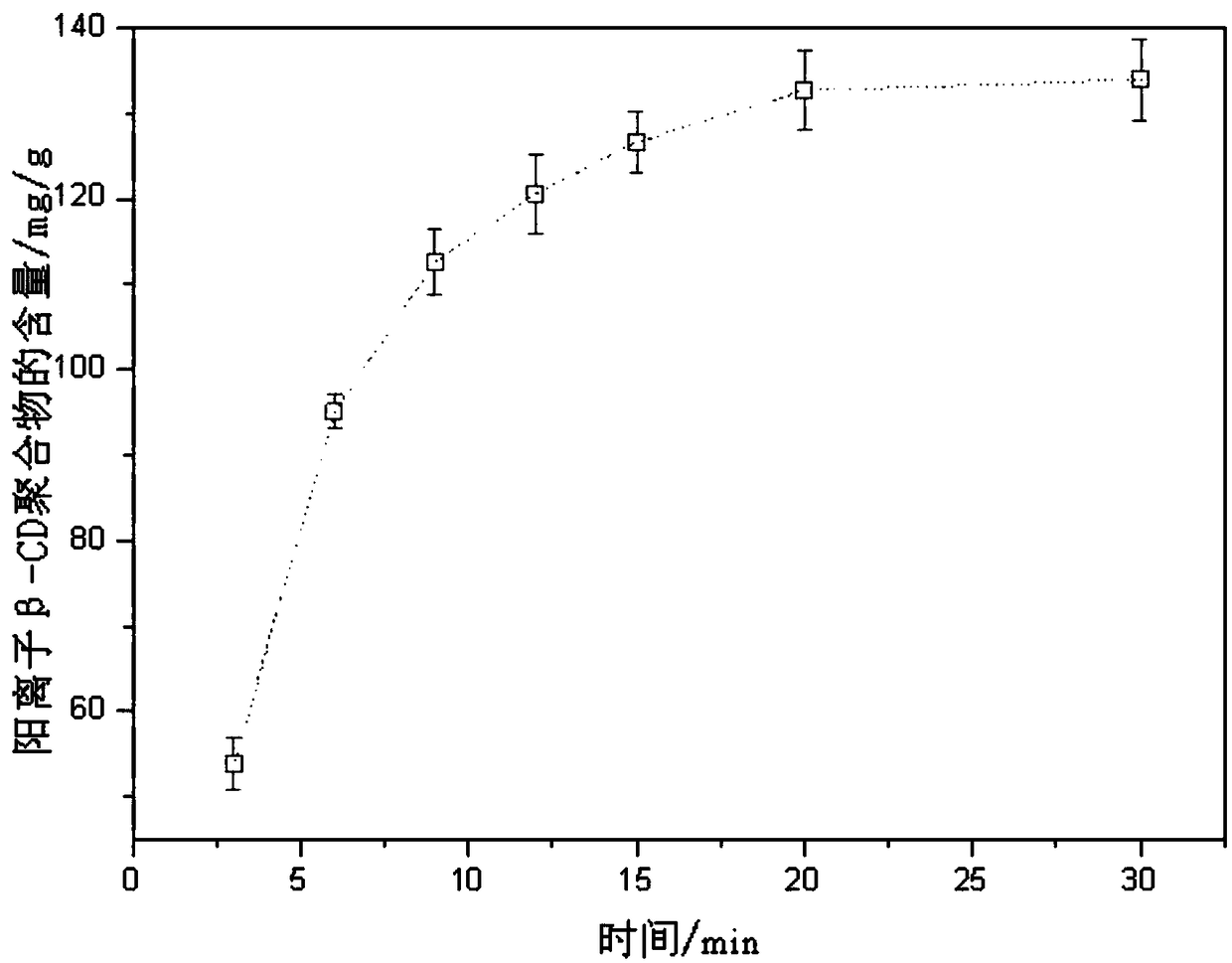Preparation method of hydrogel
A hydrogel and aqueous solution technology, which is applied in the field of gel material synthesis, can solve the problems of lack of in vivo drug delivery characteristics, less β-CD, and inapplicability, and achieve good biocompatibility, fast cross-linking speed, and improved Effects of mechanical strength and viscoelasticity
- Summary
- Abstract
- Description
- Claims
- Application Information
AI Technical Summary
Problems solved by technology
Method used
Image
Examples
Embodiment 1
[0025] 1. Preparation of cellulose nanofibril membrane:
[0026] Take an appropriate amount of TEMPO oxidized cellulose nanofibrils and add them to water, stir rapidly at 40°C until they are completely dissolved, then add glycerin and continue to stir rapidly at 40°C until the solution is uniform and transparent, then the solution is subjected to centrifugal defoaming and ultrasonic defoaming treatment, degassing The soaked solution is dried in an oven at 55°C for 6-12 hours to obtain a cellulose nanofibril film.
[0027] The parts by mass of each raw material added in the reaction system are: 1.5 parts of TEMPO oxidized cellulose nanofibrils, 6 parts of glycerin, and the balance of water.
[0028] 2. Preparation of hydrogel:
[0029] Dissolve the water-soluble cationic β-CD polymer in water to prepare a solution with a concentration of 20%, and then take an appropriate amount of Ag-NH 2 NPs (prepared by referring to the methods described in the aforementioned literature 1 a...
Embodiment 2
[0031] 1. Preparation of cellulose nanofibril membrane:
[0032] Take an appropriate amount of TEMPO oxidized cellulose nanofibrils and add them to water, stir rapidly at 40°C until they are completely dissolved, then add glycerin and continue to stir rapidly at 40°C until the solution is uniform and transparent, then the solution is subjected to centrifugal defoaming and ultrasonic defoaming treatment, degassing The soaked solution was dried in an oven at 55° C. for 10 h to obtain a cellulose nanofibril film.
[0033] The mass parts of each raw material added in the reaction system are: 2 parts of TEMPO oxidized cellulose nanofibrils, 7 parts of glycerin, and the balance of water.
[0034] 2. Preparation of water-soluble cationic β-CD polymer:
[0035] (1) Add an appropriate amount of β-CD into NaOH solution with a concentration of 220g / L, stir at 60°C until completely dissolved, then add 2,3-epoxypropyltrimethylammonium chloride solution with a concentration of 900g / L, Epi...
Embodiment 3
[0044] 1. Preparation of cellulose nanofibril membrane:
[0045] Take an appropriate amount of TEMPO oxidized cellulose nanofibrils and add them to water, stir rapidly at 40°C until they are completely dissolved, then add glycerin and continue to stir rapidly at 40°C until the solution is uniform and transparent, then the solution is subjected to centrifugal defoaming and ultrasonic defoaming treatment, degassing The soaked solution was dried in an oven at 55° C. for 10 h to obtain a cellulose nanofibril film.
[0046] The mass parts of each raw material added in the reaction system are: 1 part of TEMPO oxidized cellulose nanofibrils, 5 parts of glycerin, and the balance of water.
[0047] 2. Preparation of water-soluble cationic β-CD polymer: the method is the same as in Example 2.
[0048] 3. Preparation of hydrogel:
[0049] Dissolve the water-soluble cationic β-CD polymer prepared in step 2 in water to prepare a solution with a concentration of 30%, and then take an appr...
PUM
| Property | Measurement | Unit |
|---|---|---|
| Charge density | aaaaa | aaaaa |
Abstract
Description
Claims
Application Information
 Login to View More
Login to View More - R&D
- Intellectual Property
- Life Sciences
- Materials
- Tech Scout
- Unparalleled Data Quality
- Higher Quality Content
- 60% Fewer Hallucinations
Browse by: Latest US Patents, China's latest patents, Technical Efficacy Thesaurus, Application Domain, Technology Topic, Popular Technical Reports.
© 2025 PatSnap. All rights reserved.Legal|Privacy policy|Modern Slavery Act Transparency Statement|Sitemap|About US| Contact US: help@patsnap.com



